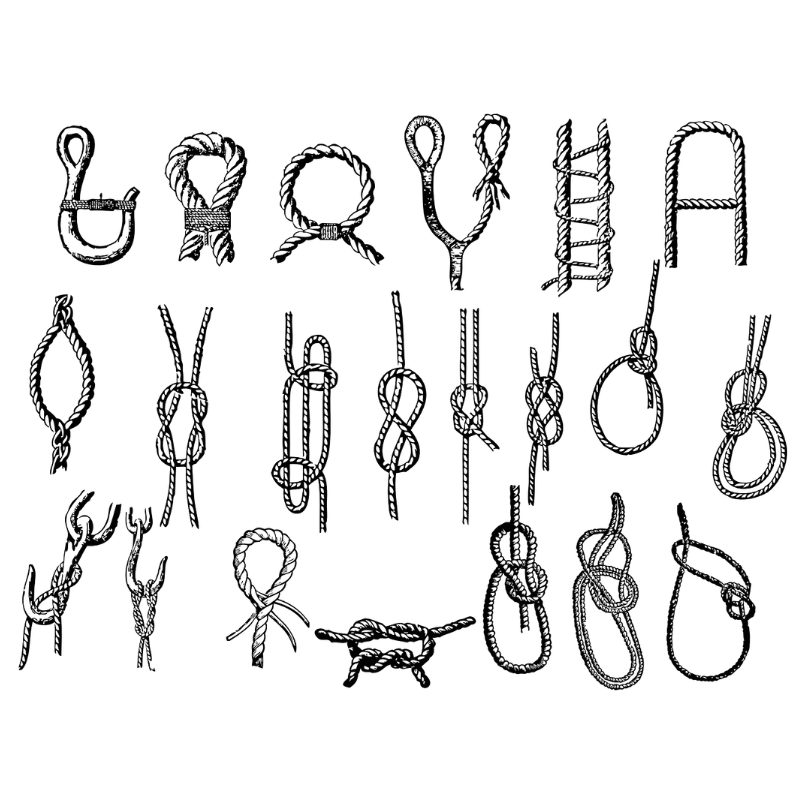
Knots have many different uses and one of the most important skills required for surviving in the wild is knowing, not only how to tie them, but also which type to use for a specific situation.
There are literally hundreds of different types of knots, but there are a few essential ones that one should know to cover the majority of situations…
In this article I’m going to be discussing the 7 best survival knots for camping in the wild.
Reef Knot (Also known as the Square Knot)
The reef knot is probably the most basic and easy knot to tie – it is a binding knot and is used to tie the two ends of the same rope together.
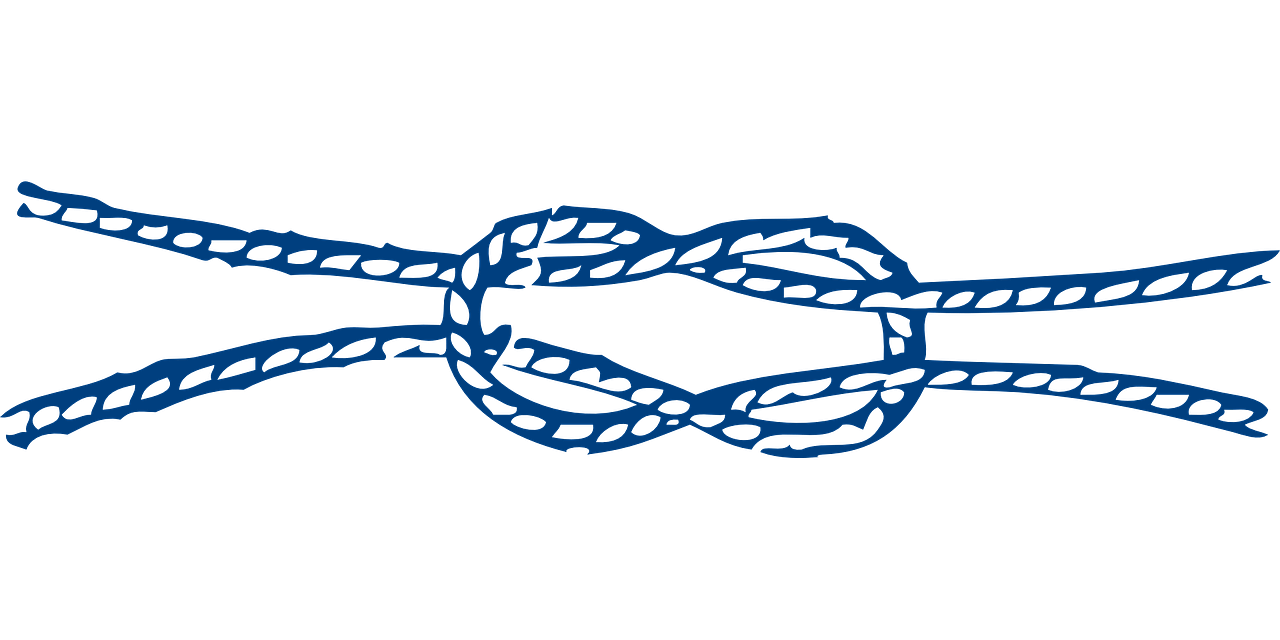
The knot is formed by tying a left-handed overhand knot and then a right-handed overhand knot, or vice versa.
Uses
- It can be used to keep bundles of things together, for example a small pile of wood.
- It can also used to tie a bandage around a wound or for tying a makeshift sling for an injured arm.
Warnings
- Never use it for critical loads as it can fail in certain situations.
- It should never be tied as a bend (tying two ropes of unequal size or thickness together).
Video: How to tie the reef knot
Clove Hitch
Hitches are used to bind a rope to an object.
Uses
- The clove hitch is a very useful knot that is used to start and finish lashings. Lashings are used to join poles together to make pioneering structures, such as bridges or towers or even smaller structures like a camp table.
- It can also be used to secure lines running along a series of posts.
Warnings
- Can open if the standing part is pulled with force in the wrong direction.
Video: How to tie the clove hitch
Bowline
The Bowline is one of my favourite knots and is extremely useful to know for a variety of different situations.
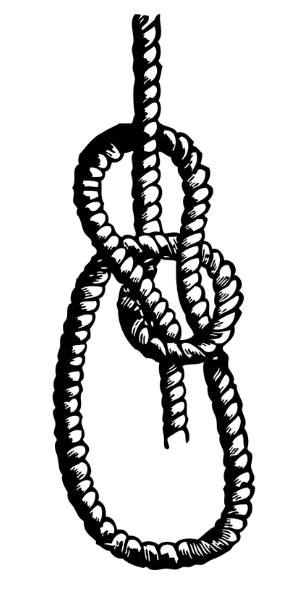
It forms an open, fixed loop that is very secure and won’t slip when loaded – it is also relatively easy to untie when not loaded.
Uses
- Its main use is as a rescue knot to pull someone out of a dangerous situation, such as a mountain climbing or water accident.
- It can be used to secure an object by tying the knot around a tree or pole.
- To hang a child’s swing from a tree branch.
Warnings
- The bowline is a very reliable knot – however it can work itself loose when not under tension, so one should be careful to recheck it before loading it.
Video: How to tie the bowline knot
Sheet Bend
This knot is used to tie two ropes of different thickness/materials together.
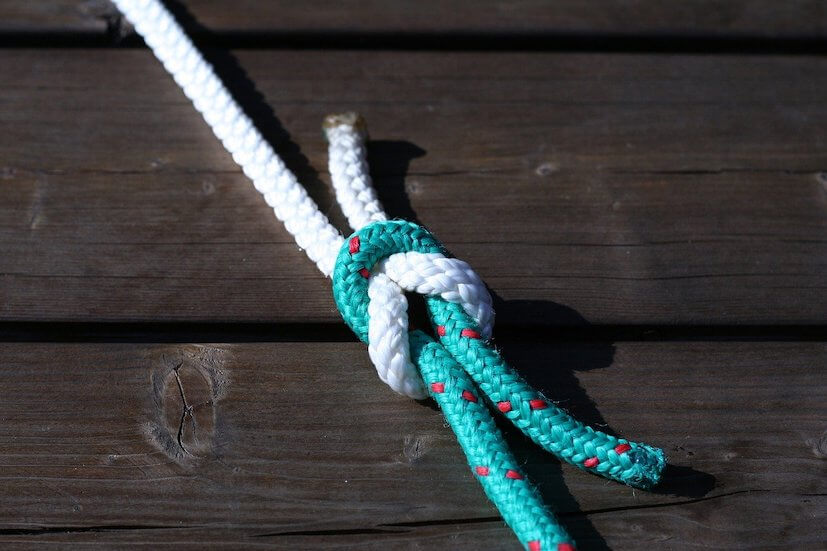
Uses
- It is very useful to lengthen a piece of rope if it’s too short for a particular task.
- It can be used to temporarily fix broken boot laces.
Warnings
- Like the bowline it can work itself loose when not under tension, so the knot should be checked before any load is applied.
Video: How to tie the sheet bend
Round Turn & Two Half Hitches
This knot is used for tying a rope to a fixed object, such as a ring, bar or pole.
A round turn wraps the rope around the object and the two half hitches secure the end around the standing part.
Uses
- Making a clothesline or tying a hammock to a tree.
Video: How to tie the round turn & two half hitches
Taut Line (Also Known As Midshipman’s Hitch)
The taut line hitch is an adjustable loop knot for use on lines under tension.
It is useful when the length of a line will need to be periodically adjusted in order to maintain that tension, which is achieved by sliding the hitch up or down the standing part of the rope.
Uses
- It is commonly used to adjust the strain on tent guy-lines.
Video: How to tie the taut line hitch
Double Figure Of Eight Knot
The double figure of eight knot is a general purpose stopper knot that is very strong and tightens with a load.
Uses
- It is the gold standard for climbing as it’s very secure and easy to safety check.
- In a camp setting it can be used for other purposes – such as creating a line with multiple loops, from which things can be hung.
Warnings
- If you take a fall while climbing – it can become extremely tight, such that it’s almost impossible to undo.
Video: How to tie the double figure of eight knot
Conclusion
Knots are an essential part of surviving in the wild – and knowing which ones to use when is just as important. Simply put, knowing which knots to use in different situations could save yours or someone else’s life.
The knots discussed in this article should cover most basic camping situations and enable you to come up with a solution to a lot of the camping problems that can arise.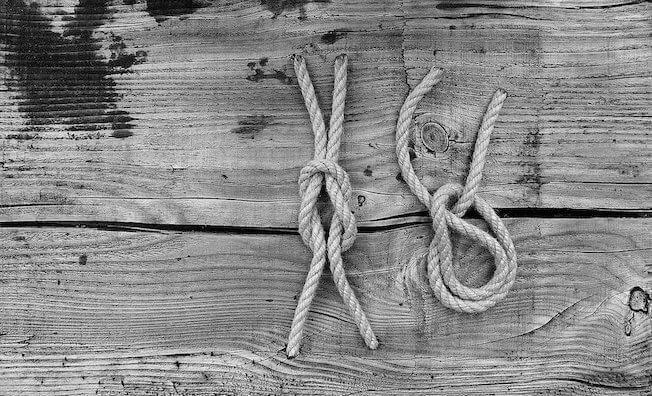
I hope you’ve found this post useful.
If you have any questions or comments, then please leave them below and I’ll get back to you as soon as I can.
Mohammad









knowing how to build camp is a pleasurable thing but question is can you always get the original tools to build it.
it was very fun to me the first time i camped in the wild i was afraid that maybe winds will come and remove our camp, but i later notice that the wind did not remove our camp because we used a good material.
my suggestion is that website should try and supply a better tools for the building.
You can find useful equipment for camping here.
This is really educating, a big thanks to you for sharing this beautiful and insightful post on the best survival knots for camping in the wild.. Before now I never really knew the importance of knots in the camp. But now I have a more detailed understanding and uses of the knot. l think I love the bowline knot as well.
I’m glad you found the post useful – the key is to practice the knots again and again until they become second nature.
In order to suffer the world life, it is expected and advisable to know one of this method, I can’t imagine if I can really attempt four of this method mentioned, but cool you need them during time of need. This article is very helpful, that for sharing these updates, hoping to see more updates from you
No problem – happy to help.